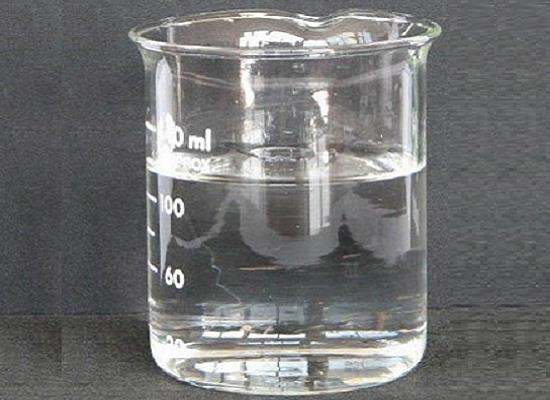2-Methylbutane: Properties, Uses, and Safety Considerations in Industrial Applications
General Description
2-Methylbutane is a versatile chemical compound commonly derived from natural gas and crude oil. It shares properties with n-pentane and is used as a solvent, building-block chemical, and propellant in various industrial processes. In the cosmetics industry, it serves as a propellant in aerosol sprays, providing a fine mist for even distribution of products. In the industrial sector, it is used as a solvent in the production of rubber, plastics, and other polymers, as well as a blowing agent for foams and insulation materials. Safety-wise, 2-Methylbutane is considered safe for cosmetic use, with minimal health risks at normal concentrations, and it has favorable environmental characteristics.

Figure 1. 2-Methylbutane
Properties
2-Methylbutane is a low-molecular-weight alkane derived from natural gas and crude oil. Similar to n-pentane, it is a flammable liquid. 2-Methylbutane possesses physical properties that closely resemble those of n-pentane. It is relatively stable and exhibits inertness towards most chemical agents. 2-Methylbutane is commonly available in compressed liquefied form and is utilized as a solvent in various applications. Additionally, it serves as a crucial building-block chemical, participating in reactions to form other industrial substances. 2-Methylbutane has found use in the production of chlorinated derivatives, amyl-naphthalene, and isoprene. Furthermore, 2-Methylbutane plays a role in industrial applications as an aerosol propellant and a blowing agent for polystyrene. Its ability to generate pressure and create a fine mist makes it suitable for aerosol usage. In the manufacturing process, it contributes to the expansion of polystyrene foam, resulting in its lightweight and insulating properties. In summary, 2-Methylbutane, possesses similar properties to n-pentane, making it a valuable solvent, building-block chemical, and propellant in various industrial processes. 1
Uses in Cosmetic Products and Industrial Applications
2-Methylbutane, also known as 2-Methylbutane, is a colorless and flammable liquid that is used in various cosmetic products and industrial applications. In the cosmetics industry, it is often used as a propellant in aerosol sprays such as hairsprays, deodorants, and shaving creams. It helps to create a fine mist that evenly distributes the product, providing a smoother and more effective application. In the industrial sector, 2-Methylbutane is commonly used as a solvent in the production of rubber, plastics, and other polymers. It is also used as a blowing agent in the manufacture of foams and insulation materials. Furthermore, it is a common component in the production of refrigerants and propellants for spray products. However, it is important to note that 2-Methylbutane can be harmful if not handled properly. It is highly flammable and should be stored and transported in accordance with safety regulations. Additionally, prolonged exposure to large quantities of 2-Methylbutane can cause health problems such as dizziness, nausea, and headaches. In conclusion, 2-Methylbutane is a versatile chemical compound that has many uses in both the cosmetics and industrial sectors. While it is an effective ingredient in many products, precautions must be taken to ensure its safe handling and use. 2
Safety Considerations
2-Methylbutane is considered safe for use in cosmetic products under current conditions of concentration and use. An independent panel of experts reviewed the health and safety aspects of 2-Methylbutane and other light aliphatic paraffinic hydrocarbons used in cosmetics. They concluded that 2-Methylbutane is practically nontoxic, with no permanent alterations in body function induced by exposure to its vapors. 2-Methylbutane has a lower flammability limit of 1.4 vol% in air, which is 14,000 parts per million (ppm). Toxic effects are not observed at levels below this concentration. The relationships among different light aliphatic petroleum hydrocarbons suggest that branched-chain derivatives, like 2-Methylbutane, are less toxic than their straight-chain counterparts. 2-Methylbutane shows less anesthetic activity than pentane at a given concentration. Regulatory bodies such as the Food and Drug Administration (FDA) permit the use of 2-Methylbutane in specific applications, such as the manufacture of foamed plastics. The American Conference of Governmental Industrial Hygienists (ACGIH) recommends an 8-hour threshold limit value (TLV) and a short-term exposure limit (STEL) for both pentane and 2-Methylbutane to protect workers from their narcotic effects. Furthermore, 2-Methylbutane has a lower potential for photoreactivity in the atmosphere compared to other chemicals, contributing less to atmospheric pollution and adverse global effects. It has zero ozone depletion potential (ODP) and a negligible global warming potential (GWP), making it environmentally friendly. In summary, 2-Methylbutane is considered safe for cosmetic use, poses minimal health risks at normal concentrations, and has favorable environmental characteristics. 3
Reference
1. National Center for Biotechnology Information (2023). PubChem Compound Summary for CID 6556, Isopentane.
2. Dionisio KL, Phillips K, Price PS, et al. The Chemical and Products Database, a resource for exposure-relevant data on chemicals in consumer products. Sci Data. 2018;5:180125.
3. Galvin JB, Marashi F. 2-Methylbutane (isopentane). CAS# 78-78-4. J Toxicol Environ Health A. 1999;58(1-2):23-33.
Related articles And Qustion
Lastest Price from 2-Methylbutane manufacturers

US $10.00/KG2025-04-21
- CAS:
- 78-78-4
- Min. Order:
- 1KG
- Purity:
- 99%
- Supply Ability:
- 100 mt

US $23.00/L2025-01-16
- CAS:
- 78-78-4
- Min. Order:
- 1L
- Purity:
- 0.99
- Supply Ability:
- 3000000tons





